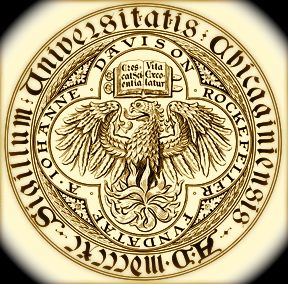Hello! We're Jata, Nora, Dan, Ioana, Rob, Damon, Thomas, and Laura. We're undergrads at the University of Chicago, and together we study biology, physics, math, chemistry, computer science, computational neuroscience, and artificial intelligence. We like hanging out in library basements and around dining halls. When we're not in ur labz, hacking ur genomes, we're building shrines to our Fearless Leader, Steve.
Our approach to the iGEM 2008 challenge is typical of the University of Chicago: heavily theoretical. We interpret the fundamental goal of synthetic biology to be the organization of genetic information into standardized regions of code, that will create the functional equivalent of an open-source biological programming language. Synthetic biology is a novel approach to engineering biology, focusing on organizing genetic information into “standard parts,” comparable to interchangeable parts in manufacturing industries such as automobiles or electronics. As opposed to ad hoc genetic engineering methods, that do not necessarily emphasize the organization of genetic data, synthetic biology aims to move towards a scalable engineering framework. This framework is built upon the principles of standards of abstraction. Abstraction, the process of generalization to reduce information content, allows us to hide the complexity of the genetic code, and utilize a greater amount of information in a simpler design.
|
|
>>> Goals & Specifics
It is our aim to add to the Registry of Standard Biological Parts, by organizing the genetic material necessary to express mussel foot proteins (Mefp-3, Mefp-5, and Mgfp-5) in E. coli. These proteins have both bio-adhesive and anti-biofouling properties. Bio-adhesion gives mussels the ability to attach to various substrates, while anti-biofouling prevents the accumulation of unwanted biological material on selected surfaces. This makes these proteins a unique and promising target of study for biomedical research (e.g. synthetic implants, pacemakers, artificial organs, and internal prosthetics).
|
|
 "
"

